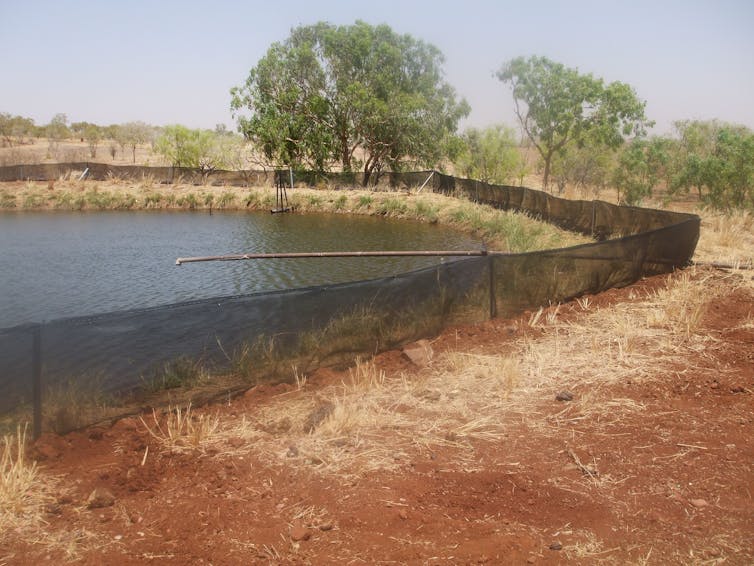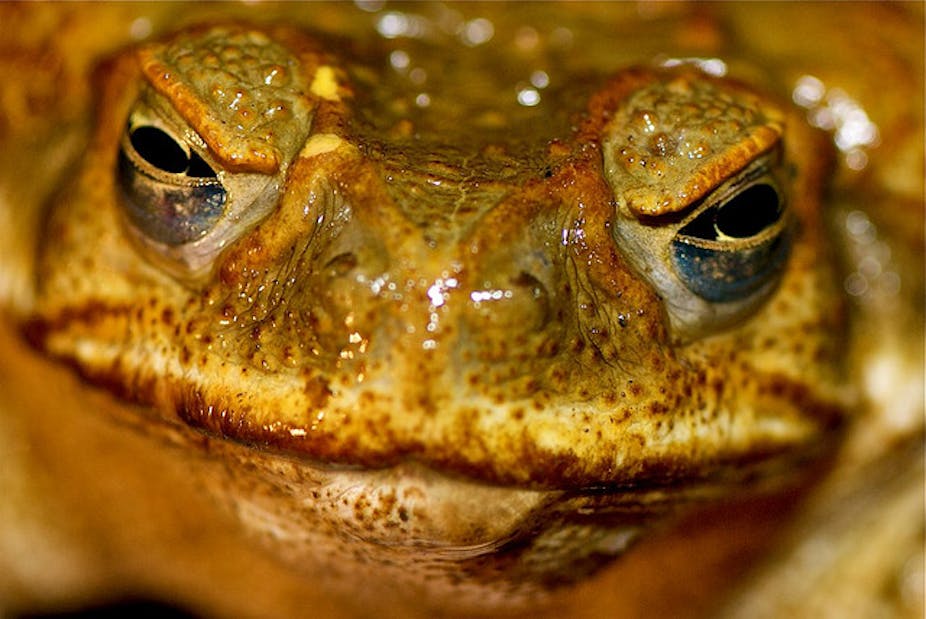Shutting down around 100 man-made water storage structures in Australia’s north west could stop the spread of cane toads into Western Australia’s Pilbara region, a new study has found.
Cane toads, which breed astonishingly fast and can kill native animals such as quolls, snakes and goannas, need water in which to lay eggs and hatch tadpoles. They are expected to completely colonise the Kimberley region within a decade.
Turkey nest dams – water storage structures built by graziers – shore up drinking water for livestock but also inadvertently serve as breeding grounds for cane toads.

New modelling published in the Journal of Applied Ecology showed that removing 100 of the man-made water bodies would prevent the toad’s advance.
“If we remove a subset of those water bodies, we will keep 270,000 square kilometres of Australia toad-free,” said one of the researchers, Dr Ben Phillips, an evolutionary ecologist from James Cook University.
“What the modelling exercise has told us is that local control options exercised in the right spots can have massive landscape benefits.”
Dr Phillips said such a plan would only work with the support of pastoralists who currently use those water bodies for farming and livestock.
“There would be major costs to any pastoralists affected so those costs shouldn’t be borne by the pastoralists,” he said.
Removing the man-made lakes was not equivalent to shutting down the bore entirely, said Dr Phillips.
“The bore water can simply be diverted to a toad-proof closed tank and drinking trough system for stock watering purposes.”
The poisonous frogs were first introduced to north-eastern Queensland in 1935 to control sugar cane beetles and have now spread into NSW, the Northern Territory and parts of Western Australia.
Professor Ian Musgrave, senior lecturer in Pharmacology at University of Adelaide and a researcher of cane toad toxins, said that the research “shows that it may be possible to halt the invasion on at least one front using very simple, environmentally friendly methods.”
“None of the control measures we have in place are able to deal with the relentless advance of thousands of toads in remote, and often impassable regions. Biological control measures (such as using lungworms) have been disappointing, although trapping based on chemical signalling may hold more promise,” said Dr Musgrave, who was not involved in the research.
“Toads, it goes without saying, need water, although the leading populations of cane toads have evolved to be more resistant to lack of water than the garden variety, they still need reasonable access to water to spread. The Kimberley Pilbara corridor is a natural choke point in any wave of toads coming down the WA coast. Only a narrow strip of coastal land that fronts great swathes of desert has sufficient water to host these toxic terrors on their journey south,” he said.
“What is very encouraging is that their modelling work shows that we don’t even need to concentrate on all these waterholes, which would be a daunting task, even given the narrow region involved. They find that there are three critical choke points where closing a relatively small number of waterholes would stop the toads movement south.”
Dr Hugh Possingham, Director of the ARC Centre of Excellence for Environmental Decisions at the University of Queensland said the research was interesting and important.
“An economic analysis on top of the ecological analysis would be useful – although we may not have sufficient time,” said Dr Possingham, who was not involved in the modelling.
“If it is true that the invasion could be halted or significantly delayed, then the benefits would be much more than financial – the ecology of a huge ecosystem is under threat,” he said.
“Long distance dispersal via human transport such as vehicles still poses a serious risk that would negate the benefit of this clever strategy, so rigorous quarantine is an essential additional strategy.”
Additional reporting by Sally Zou.

